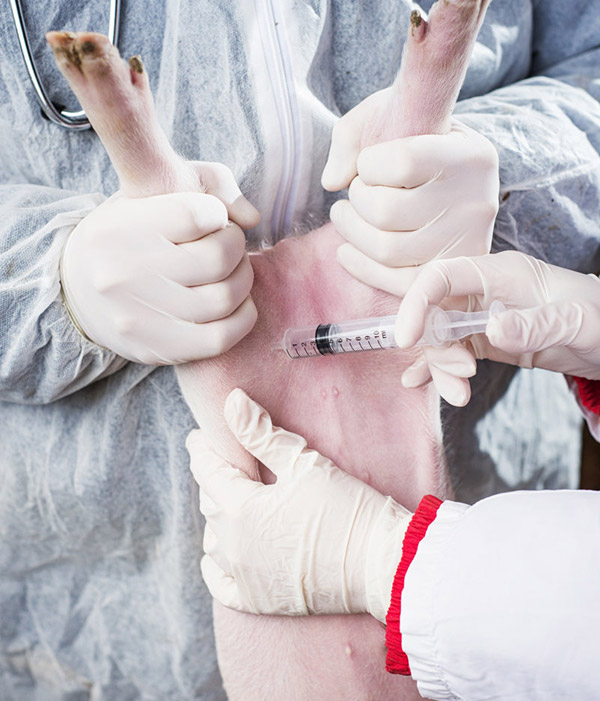Veterinary Drug Residues Testing

Veterinary drugs are commonly used for diagnosis, treatment, or prevention of disease in livestock. Some drugs are also used for other purposes, such as tranquilization or gaining weight. Application of veterinary drugs may leave residual substances in bodies of treated animals, which can lead to health risks for consumers. Many countries have enforced legislation to restrict the usage of veterinary drugs, with the hope of decreasing veterinary drug residue levels in animal by-products. With the fast pace of food market expanding and globalization, it becomes increasingly demanding to control the drug residues in livestock worldwide. Lifeasible, as one of the leading laboratories in the area of veterinary drug residues testing, can help you comply with statutory requirements, and to ensure the health safety of your consumers.
Lifeasible has developed state-of-the-art technologies to perform a broad portfolio of veterinary drug residues testing, including:
- Antibiotics: Antibiotics are used to kill or inhibit microorganisms in livestock. Commonly used antibiotics include aminoglycosides, carbadox, nitrofurans, nitroimidazoles, sulfonamides, chloramphenicol, tetracyclines, bacitracin, chinolones, β-Lactams (penicillin), streptomycin, fluoroquinolones and quinolones, and several more.
- Antiparasitics: e.g. triphenylmethane dyes (malachite green), avermectins, coccidiostats, and so on.
- Non-steroidal anti-inflammatory drugs (NSAIDs): e.g., phenylbutazone.
- Anthelmintics: e.g., benzimidazoles, macrocyclic lactones, salicylanilides, levamisole, praziquantel, morantel, clorsulon, and monepantel.
- Hormones and hormone analogues:
- Androgens.
- Testosterone: e.g., methyltestosterone, 19-Nortestosterone,and trenbolone.
- Estrogens: e.g., diethylstilbestrol (DES), 17ß-Estradiol, ethinylestradiol, and zeranol.
- Gestagens: e.g., acetylgestagenes, melengestrol acetate.
- β-Agonists: e.g., clenbuterol and ractopamine.
- Poisons: e.g., compound 1080 (fluoroacetate) and anticoagulants.
- Sedatives.
- Fungicides.
- Thyreostats.
- Stilbenes.
- Resorcyclic acid lactones.
- Others.
For accurate and efficient evaluation of veterinary drug residues, we apply a variety of modern analytical technologies, including:
- Enzyme-linked immunosorbent assay (ELISA). ELISA tests allow specific quantitative analysis of single antibiotics or antibiotic groups by immunological antibody-antigen recognition.
- Growth inhibition assay. This method is based on the growth inhibition of spores by antibiotics, which can offer a simple and cost-effective qualitative screening for a broad spectrum of antibiotics.
- Liquid chromatography technique. The samples can be separated by specific chromatography columns, and then detected via mass spectrometry (MS) or by a UV/Vis detector after postcolumn derivatization.
- Gas chromatography technique.
At Lifeasible, we will continuously develop cutting-edge high-resolution technologies to help you analyze veterinary drug residues within complex matrices. We can provide you with an accurate test report to help you enhance product quality, to ensure the safety of your consumers, and to save your time and money. Moreover, we can perform the analysis of veterinary drug residues in a wide variety of food and feed samples, including meat, poultry, shellfish, fish, egg and egg products, honey, milk and milk products, animal feeds, and so on. Welcome to contact us for technical consults and inquiries.
For research or industrial raw materials, not for personal medical use!
